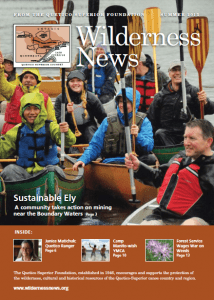The Summer 2013 Issue of Wilderness News is in the mail and online.
COVER STORY:
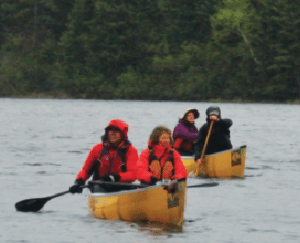
Sustainable Ely
Envisioning a mining-free future for the Boundary Waters
By Alissa Johnson
On the first day of June, thirty canoes and some sixty paddlers made their way down the Kawishiwi River. The paddlers wore down jackets and raincoats under their life jackets, and they paddled into a cold and rainy headwind. They took to the river in spite of the weather because they paddled for a purpose: to draw attention to the Boundary Waters Canoe Area Wilderness (BWCAW), which together with the South Kawishiwi River, has been named one of the most endangered watersheds of 2013 by the nonprofit American Rivers, and to launch a new initiative called Sustainable Ely. Read On >
Janice Matichuk: Quetico Ranger and Ambassador to the Wilderness
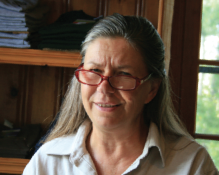
When Janice Matichuk accepted the position of Interior Park Ranger for Quetico Provincial Park in 1985, her daughter was five months old. The Cache Bay Ranger Station where she was posted lay 1,000 miles away from the log home she and her husband were building in eastern Ontario. Uprooting for the seasonal job would mean being a 16 kilometer motorboat ride and a six-hour drive from Atikokan, and living in near isolation with an infant. But the young couple gave it a go. They packed up the baby, the family dog, and 2,000 pounds of gear—including a diaper pail, a crib, a high chair and four months of canned goods and frozen foods—and moved into a small island cabin on Cache Bay. “We had no idea what we were getting into,” Janice remembers. Read On >
Camp Manito-wish—Where Kids Try it, Change it, and Try Again
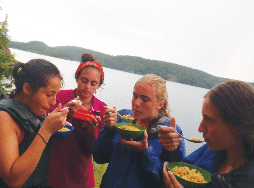
When a group of campers from Camp Manito-wish YMCA approaches its first campsite in the Boundary Waters Canoe Area Wilderness or Quetico Provincial Park, the counselors ask the group to pause on the water. They’ll float in their canoes and talk through everything that’s going to happen on land: how they’ll unload the canoes, who will set up the tents, and who will gather firewood. It’s a way to set expectations, but it’s also a key part of the Manito-wish philosophy to transfer leadership from counselor to camper. Read On >
Board Member Profile: John Case
Forest Service Wages War on Wilderness Weeds
by Greg Seitz
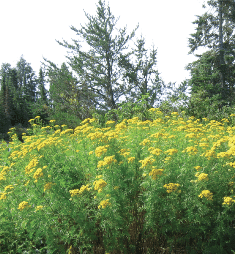
The Superior National Forest is spearheading an effort to stop the spread of weeds into the Boundary Waters Canoe Area Wilderness. For the past six years, Forest Service crews have been mapping out where invasive plants are growing in the Boundary Waters, and pulling them up by hand as much as possible. Those methods are not enough, according to the agency, and it’s now proposing to use herbicide to eradicate weeds in the wilderness. Read On >


